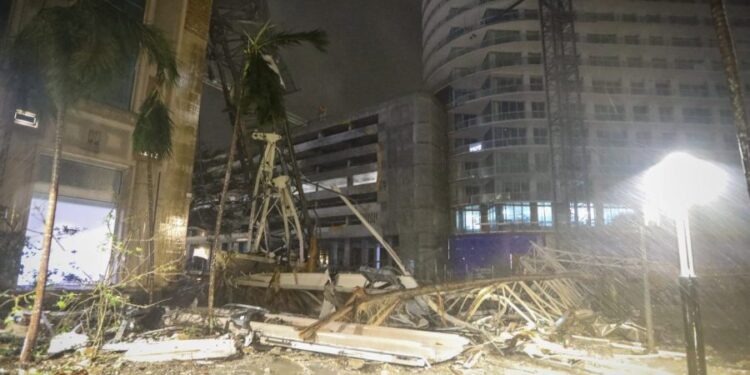
Hurricane Milton, which made landfall Wednesday evening on Florida’s west coast, barreled through the state as a Category 3 storm, with high winds and rain that left millions without power.
According to PowerOutage.us, which tracks outages nationwide, nearly 3.3 million Floridians are without power as of Thursday morning.
The National Hurricane Center (NHC) reported Milton moved quickly across central Florida overnight and produced “significant flooding and damaging winds” in its path. The cyclone had maximum sustained winds of 120 mph when it made landfall in Siesta Key, Fla.
While the eye of the storm has passed, NHC warned there is a life-threatening storm surge expected from Florida’s east-central coast to southern Georgia. Damaging hurricane-force winds will continue in the area for several more hours and residents are urged to remain away from windows.
Heavy rainfall will also continue from central to northern Florida through Thursday morning and brings the risk of “considerable flash and urban flooding,” according to the center.
The St. Petersburg, Fla., area recorded over 16 inches of rain. A water main break led to the city shutting off water for household taps, The Associated Press reported.
The deadly storm was expected to be the worst to hit the Tampa area in more than a century. Mandatory evacuations were ordered for many counties but as people packed highways leaving town, gas stations began to run out of gas.
Milton was originally forecasted to be a Category 3 storm, but it picked up intensity quickly in the Gulf of Mexico earlier this week, sparking concerns among experts that the area in its direct path would not survive.
It was upgraded to a Category 5 storm for some time as it made its way toward Florida but weakened as it approached the coast and was downgraded to a Category 1 as it passed through the state.
Milton is expected to be downgraded to an extratropical storm by Friday morning, NHC said.
After Milton hit land late Wednesdag, Gov. Ron DeSantis (R) told people to “hunker down” because it was safer than trying to leave too late.
Earlier in the day, south Florida saw close to 100 tornado warnings. The Miami National Weather Service said 5 to 7 tornadoes have been confirmed to appear from the storm. Several injuries were also reported and at least 125 homes were destroyed before landfall was confirmed.
The storm came just weeks after Hurricane Helene swept the southeastern part of the country. Recovery and repair efforts from the government are now being diverted to assess the damage from both storms.







